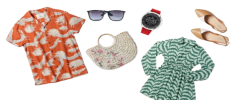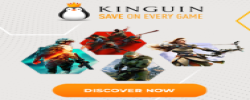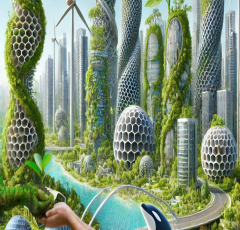
How Nature’s Genius Can Transform Our World: The Power of Biomimicry Explained

Nature has always been an incredible source of inspiration. For centuries, people have looked to plants, animals, and natural systems to solve problems and design better tools. Known as biomimicry or biomimetics, this process goes beyond mere observation, it's about learning from nature's genius and applying those lessons to create smarter, more sustainable products and solutions.
If you've ever marveled at Velcro or wondered how high-speed trains can work so efficiently, you've seen how biomimicry works. But how can we better communicate and demonstrate the concept of biomimicry to consumers so they understand its value? Let's dive into the world of design inspired by nature and discover the beauty of biomimicry in action.
What is biomimicry and why is it important?
Biomimicry is the practice of studying natural processes, structures, and systems with the goal of inspiring human innovation. The idea is simple, nature has been solving problems for billions of years, so why not learn from it? Instead of reinventing the wheel, I can study how plants grow, how animals adapt, or how ecosystems maintain balance—and apply those principles to real-world challenges.
What makes biomimicry so powerful is its focus on sustainability. Nature does not waste resources, pollute the environment or overconsume. Everything has a purpose and there is a balance to it. By mimicking natural solutions, I can create products that are not only effective, but also kinder to the planet.
Real examples of biomimicry
One of the best ways to explain biomimicry is through examples. These are innovations you may already know about, but their connection to nature makes them special.
The high-speed bullet train in Japan was revolutionary, but it had one problem – it made a loud noise when exiting the tunnels. Engineers turned to nature for answers, examining the kingfisher bird, which is known for diving into the water with barely a splash. By redesigning the nose of the train to mimic a bird's beak, they reduced noise, improved aerodynamics and increased energy efficiency.
Sharks have skin covered with tiny, tooth-like scales called denticles. These structures prevent algae and bacteria from attaching to the shark's surface. Researchers have replicated this pattern to design antibacterial surfaces for hospitals and medical equipment. It is a perfect example of how nature provides a solution to a human health problem.
Lotus leaves remain clean even when growing in a muddy environment. The secret lies in their surface structure, which repels water and dirt. By studying this, scientists have created self-cleaning coatings for buildings, windows and textiles, reducing the need for harsh cleaning chemicals.
Why consumers need to understand biomimicry
While fascinating, biomimicry is often a concept that seems too technical or abstract to the average consumer. Many people see a product, admire its design and move on without realizing the natural inspiration behind it. So how can I bridge this gap and make biomimicry comparable?
How biomimicry is shaping the future
The possibilities of biomimicry are endless. As industries face increasing pressure for sustainability, nature provides a treasure trove of solutions.
Here are a few areas where biomimicry leads the way : -
Buildings designed to mimic termite mounds stay cool without air conditioning, reducing energy consumption. Similarly, structures inspired by honeycombs and seashells are stronger and lighter, making them ideal for construction.
Inspired by the movements of the sunflower, the solar panels track the position of the sun to maximize energy absorption. Modeled after whale fins, wind turbines produce more power with less resistance. By studying how nature uses energy, I can create smarter renewable energy solutions.
Nature has already solved countless health-related challenges. From antibacterial surfaces inspired by shark skin to adhesives modeled after gecko feet, biomimicry is helping scientists design tools that improve patient care and safety.
Learning from nature for a better tomorrow
Biomimicry is more than a trend, it's a way of thinking. By studying nature, I gain access to billions of years of research and development. Nature teaches me how to solve problems efficiently, sustainably and elegantly.
Looking to the future, it is clear that biomimicry will play a vital role in shaping innovative products and solutions. From cleaner energy to smarter cities, nature has the answers to many of our challenges. It is up to us to listen and learn.
The next time you see a high-speed train or use Velcro, take a moment to appreciate the genius of the natural world. Because when I imitate nature, I'm not just creating better products, I'm honoring the greatest designer of all time.
If biomimicry fascinates you, take a closer look at the natural world around you. Inspiration is everywhere and solutions to tomorrow's problems can already exist in nature today.







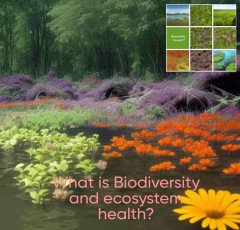

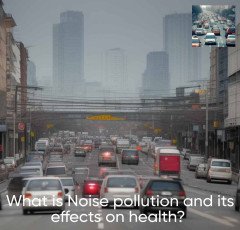

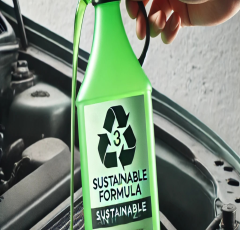






 ASUS Laptop
ASUS Laptop 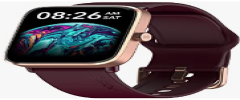 Smart Watches
Smart Watches  Best Home Appliances
Best Home Appliances  Realme Smart Phone
Realme Smart Phone  NordVPN
NordVPN  Healthy Ingredients
Healthy Ingredients  Smart Doorbell
Smart Doorbell  Essentials for Gamers
Essentials for Gamers 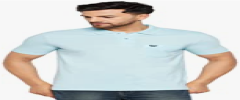 Duke T Shirts
Duke T Shirts  Hello Theme
Hello Theme  One World Collection
One World Collection  Best Sellers On Amazon
Best Sellers On Amazon  Kitchen Daily Use
Kitchen Daily Use  Wristbands
Wristbands 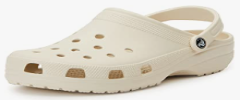 Crocs
Crocs  Women Fashion
Women Fashion  Men Clothing
Men Clothing  Unlimited access to classes on illustration, photography, design, film, music
Unlimited access to classes on illustration, photography, design, film, music 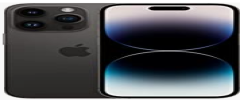 Apple iPhone
Apple iPhone  LCD Writing Tablet
LCD Writing Tablet  Prime Video
Prime Video  Bathroom Mirrors
Bathroom Mirrors  Stylish Sneakers by Red Tape
Stylish Sneakers by Red Tape  RPM 3.0
RPM 3.0 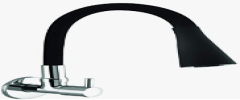 Kitchen Tap
Kitchen Tap  Sennheiser
Sennheiser  Samsung Mobile
Samsung Mobile 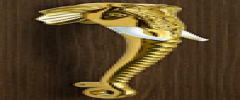 Door Handle Collection
Door Handle Collection 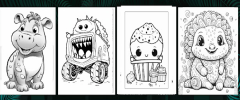 1150+Trendy kids coloring pages Bundle
1150+Trendy kids coloring pages Bundle  Hot Bags For Pain Relief
Hot Bags For Pain Relief 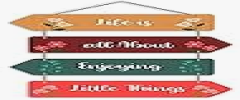 Home Decor Items
Home Decor Items  SOFAS
SOFAS  Air Purifier for Home
Air Purifier for Home  Amazon Best Selling Products
Amazon Best Selling Products 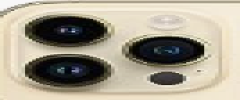 Best Phone
Best Phone  Dual USB Car Charger
Dual USB Car Charger  Acer Laptop
Acer Laptop  Dell Laptop
Dell Laptop 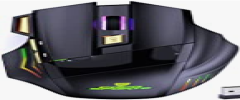 Wireless Gaming Mouse
Wireless Gaming Mouse 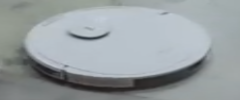 Best Robotic Vacuum Cleaners
Best Robotic Vacuum Cleaners  ELECTRONIC ACCESSORIES
ELECTRONIC ACCESSORIES  Online Marketing
Online Marketing 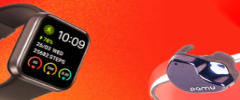 BEST SELLER TOP10
BEST SELLER TOP10  Unreal Engine 5 For Beginners Learn The Basics Of Virtual Production
Unreal Engine 5 For Beginners Learn The Basics Of Virtual Production  Online Technology Classes
Online Technology Classes  Creative Brief For Video Shoot
Creative Brief For Video Shoot 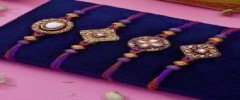 Rakhi
Rakhi  Wall Lamp
Wall Lamp  Motion Sensor Light
Motion Sensor Light  ASPINAL LONDON
ASPINAL LONDON 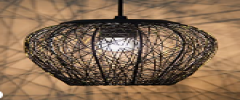 Hanging Lights For Living Room
Hanging Lights For Living Room 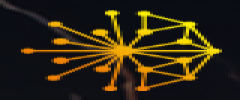 Artificial Intelligence
Artificial Intelligence  Puma (Clothing & Accessories)
Puma (Clothing & Accessories)  Graphics & Design
Graphics & Design  Best Selling Books
Best Selling Books  NordPass
NordPass  Adidas Shoes
Adidas Shoes  The Secret Email System
The Secret Email System  Echo Dot - Smart speaker with Alexa
Echo Dot - Smart speaker with Alexa  Pet Care Products
Pet Care Products  The Click Engine
The Click Engine  Favorite Company (Cuelinks)
Favorite Company (Cuelinks)  TitTok Revolution
TitTok Revolution  NordLocker
NordLocker  HP Laptop
HP Laptop  SEO Checklist
SEO Checklist  All Wireless Products
All Wireless Products  4k Projector For Home
4k Projector For Home  Digital Voice Recorder
Digital Voice Recorder  Top Rated From Amazon
Top Rated From Amazon  iPhone cable
iPhone cable 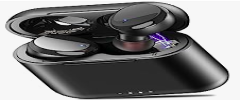 Wireless Bluetooth Earphones
Wireless Bluetooth Earphones  Only For The United States
Only For The United States 
